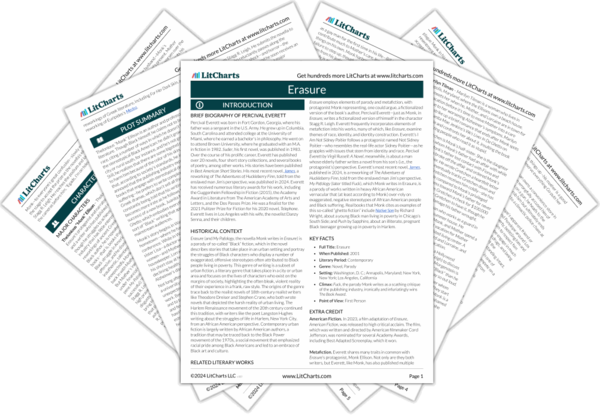Rauschenberg and de Kooning were two 20th-century artists. The work Monk describes in this conversation actually exists. Monk’s meditation on it here points to the intersection of creation and destruction, suggesting that a work of art (or a person’s identity, for that matter) come to be through the creation of something new or the erasure of something old. Monk, in drafting this hypothetical dialogue, seems to reflect on whether his playing the part of Stagg R. Leigh is an act of artistic creation—or a destructive erasure of Monk’s own self, either as a person, an artist, or perhaps both.


